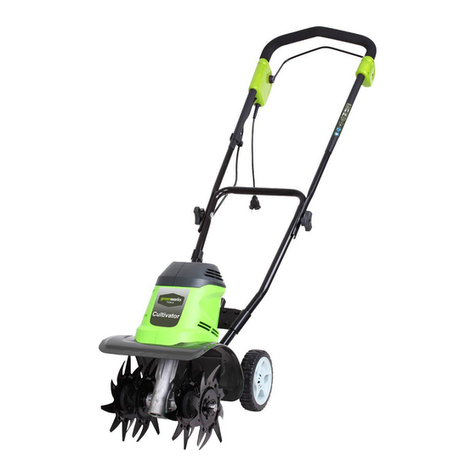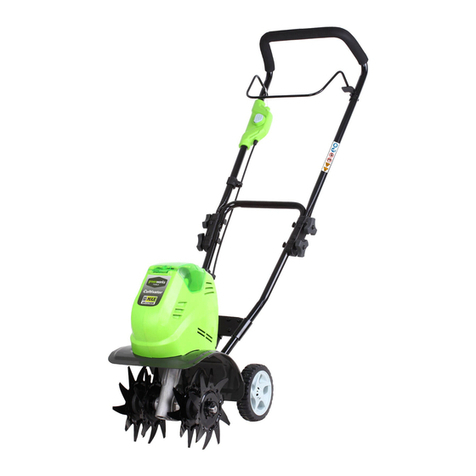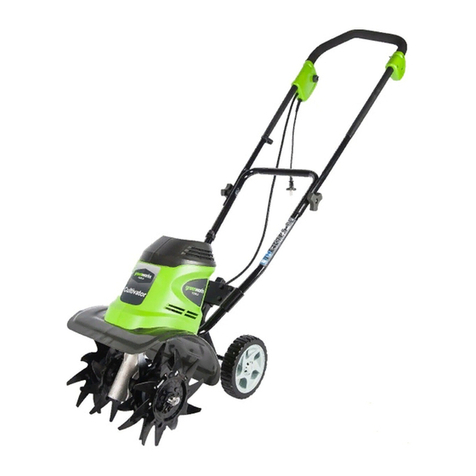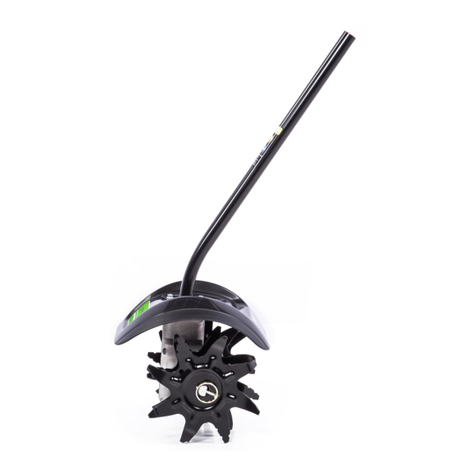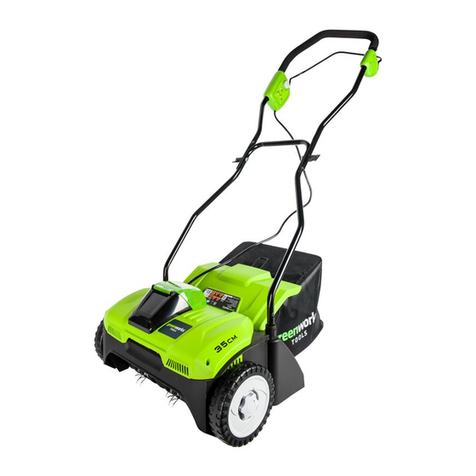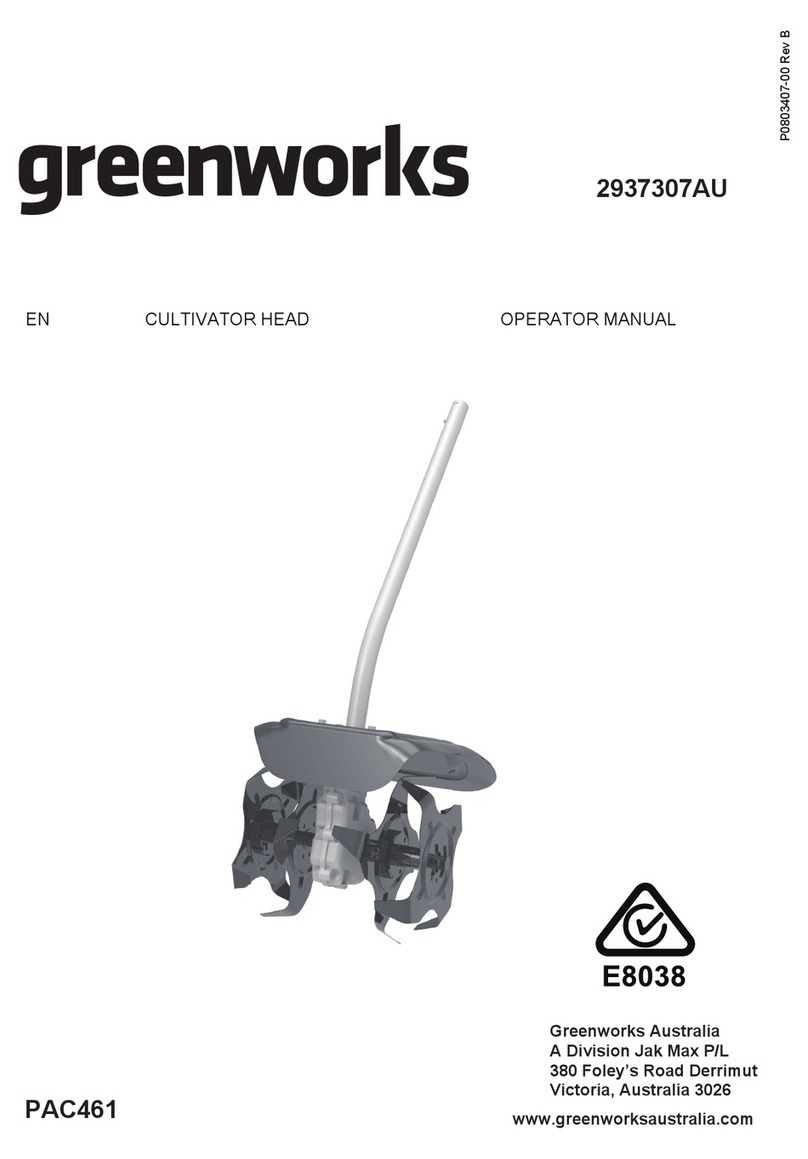
6
SAVE THESE INSTRUCTIONS
SPECIFIC SAFETY RULES
•Replace worn or damaged parts only with identical replacement parts.
•Ensure that work area is free of slippery spots or excessive quantities of stone.
•Start the cultivator carefully according to instructions from a normal operating position and
with feet well away from the tines. Do not force cultivator. It will do the job better and with less
likelihood of a risk of injury at the rate for which it was designed.
•Remove the battery from unit before unclogging the tines and when making any repairs,
adjustments, or inspections.
•Never operate the equipment on a slope.
•Use extreme caution when pulling the machine towards you.
•Store Idle Appliances Indoors — When not in use, appliances should be stored indoors in dry,
and high or locked-up place – out of reach of children.
•Maintain Appliance with Care — Keep tines clean for best performance and reduce the risk
of injury. Follow instructions for lubrication and changing accessories. Inspect cultivator cord
periodically and, if damaged, have it replaced. Keep handles dry, clean, and free from grease
and oil.
•Keep Children Away — All visitors and bystanders should be kept at a distance of at least 50
feet from work area.
•Use Right Appliance — Do not use appliance for any job except that for which it is intended.
•Ground Fault Circuit Interrupter (GFCI) protection should be provided on the circuit(s) or outlet
(s) to be used for the gardening appliance. Receptacles are available having built-in GFCI
protection and may be used for this measure of safety.
•Don’t grasp the exposed cutting blades or cutting edges when picking up or holding the
appliance.
•Check damaged parts. Before further use of this cultivator, a guard or other part that is
damaged should be carefully checked to determine that it will operate properly and perform its
intended function. Check for alignment of moving parts, binding of moving parts, breakage of
parts, mounting, and any other condition that may affect its operation. A guard or other part that
is damaged should be properly repaired or replaced by an authorized service center unless
otherwise indicated elsewhere in this manual.
•Save these instructions. Refer to them frequently and use them to instruct others who may use
•Use onlywith29652/29662 batteries.
•Do not dispose of batterycies in fire, the cell may explode, check with local codes for possible
special disposal instructions.
•Do not open or mutilate the battery, release electrolyte is corrosive and may cause damage
to the eyes or skin, it may be toxic if swallowed.
•Exercise care in handling batteries in order not to short the battery with conducting materials
such as rings. brace lets and reys. the battery or conduct may overheat and cause burns.
this cultivator. If you loan someone this unit, loan them these instructions also.

